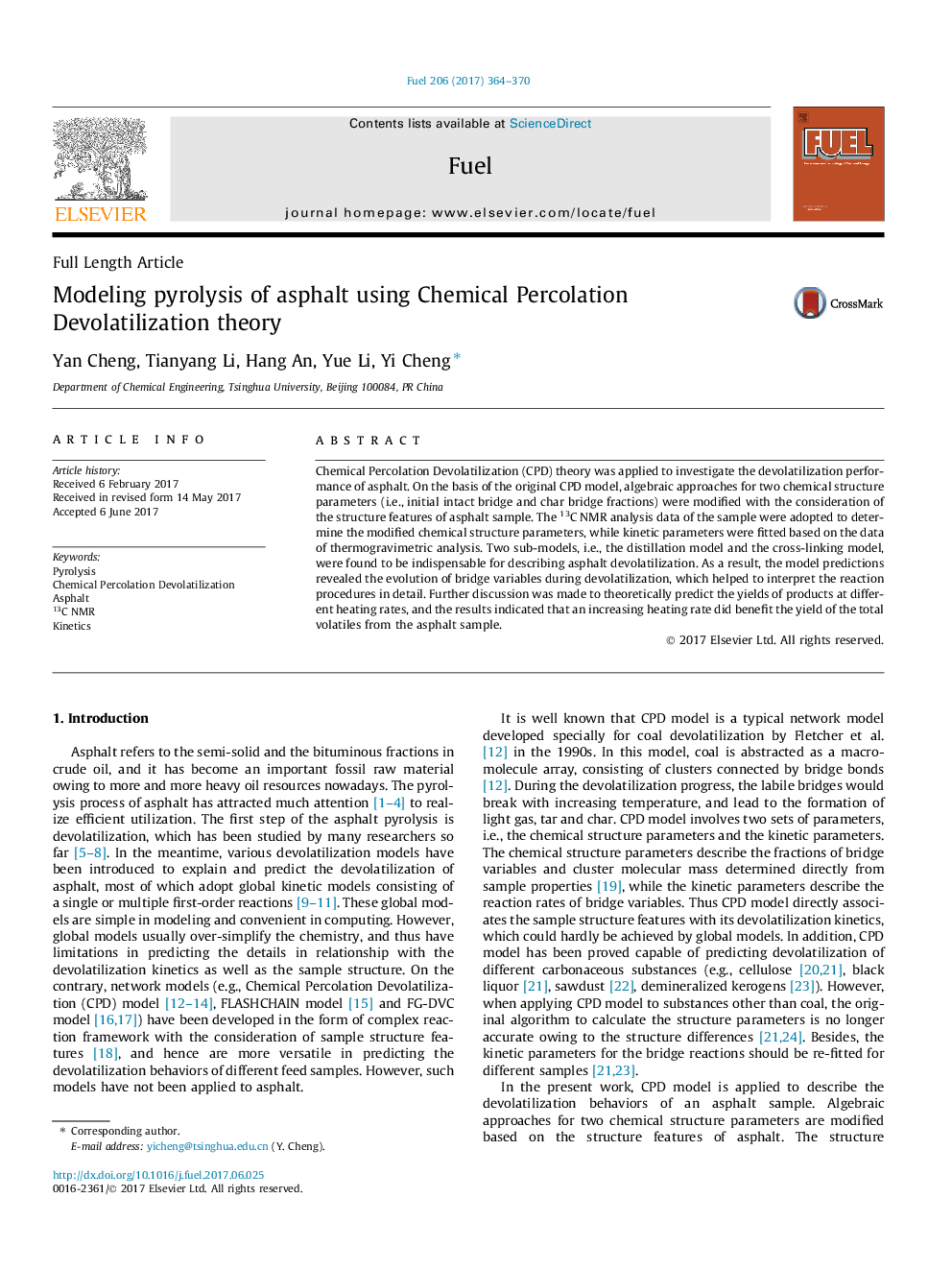| Article ID | Journal | Published Year | Pages | File Type |
|---|---|---|---|---|
| 4768581 | Fuel | 2017 | 7 Pages |
Abstract
Chemical Percolation Devolatilization (CPD) theory was applied to investigate the devolatilization performance of asphalt. On the basis of the original CPD model, algebraic approaches for two chemical structure parameters (i.e., initial intact bridge and char bridge fractions) were modified with the consideration of the structure features of asphalt sample. The 13C NMR analysis data of the sample were adopted to determine the modified chemical structure parameters, while kinetic parameters were fitted based on the data of thermogravimetric analysis. Two sub-models, i.e., the distillation model and the cross-linking model, were found to be indispensable for describing asphalt devolatilization. As a result, the model predictions revealed the evolution of bridge variables during devolatilization, which helped to interpret the reaction procedures in detail. Further discussion was made to theoretically predict the yields of products at different heating rates, and the results indicated that an increasing heating rate did benefit the yield of the total volatiles from the asphalt sample.
Related Topics
Physical Sciences and Engineering
Chemical Engineering
Chemical Engineering (General)
Authors
Yan Cheng, Tianyang Li, Hang An, Yue Li, Yi Cheng,
